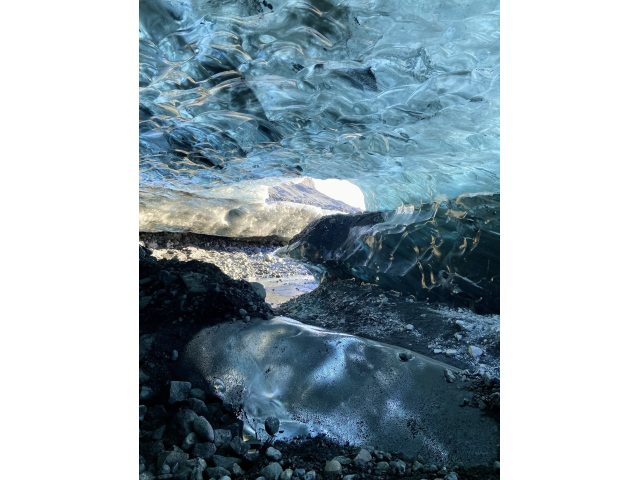Glacial Scattering
This photo captures the Sapphire Ice Cave in the Vatnajökull Glacier, Iceland. Glaciers are renowned for their deep blue tint, a colour not seen anywhere else in the world. Glacier ice is much denser than regular ice because it has been compressed for thousands of years, forcing out any remaining air pockets. In addition to this, glacial ice contains dirt, gravel and organic matter that has been engulfed in the glacier’s path. The colours of glaciers are caused by a phenomenon called Rayleigh Scattering in which light interacts with particles smaller than the wavelength of the photon. In this case, the light interacts with ice crystals in the glacier. During these collisions, kinetic energy is conserved resulting in an elastic collision. This phenomenon is not to be confused with Mie Scattering where particles are bigger than the photons or Raman Scattering where the collisions are inelastic. Since light exists as both a particle and a wave, it differs in energy from colour to colour. In Rayleigh Scattering, the intensity of the scattering is inversely proportional to the photon’s respective wavelength and therefore proportional to its energy. This causes blue, the colour with the shortest wavelength to be scattered much more than colours with longer wavelengths like red, yellow and orange. Green is also scattered a fair amount and glacial ice therefore may have hints of green creating a turquoise colour. Although violet has a shorter wavelength than blue, the sun produces low amounts of violet light leaving the ice blue.
Ryan Spagnolo
Description
Essay Title: Glacial Scattering
Category: Natural
Photo Number: 10056
School: North Toronto Collegiate Institute
Teacher Name: Mark Kinoshita
